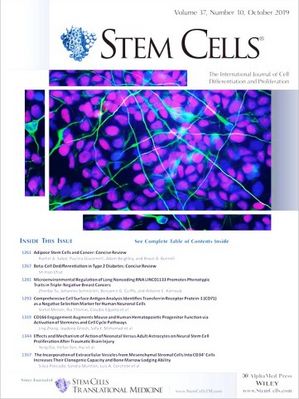
CD surface antigens in neurobiology
The Pruszak laboratory has an established, internationally recognized track record in the characterization of the neural lineage according to CD surface antigens. Based on a range of prior research [Pruszak et al., 2007; Wernig et al., 2008; Pruszak et al., 2009; Carette et al., 2010; Turac et al., 2013; Menon et al., 2014; Schöndorf et al., 2014; Pruszak (ed.), 2015; Hindley et al., 2016; Ferlemann et al., 2017] we aim to elucidate the functional and biomedical relevance of differential CD surface antigen expression patterns in neural cell types. In addition to their utility as cell population identifiers, surface molecules play major roles in cellular interactions in neuroimmunology [Amor & Woodroofe, 2014], tumor biology and infectious disease. For instance, the neural CD24 antigen has been recently identified as a potential target for cancer immunotherapy [Barkal et al., Nature 2019; Gilliam et al., 2017]. Moreover, CD markers are involved in the entry mechanisms for neurotrophic viruses, for example, Rabies virus binding to CD271 (p75NTR) [Lafon, 2005], CD111 (nectin-1) mediating cellular entry of Herpes simplex virus (HSV) [Cocchi et al., 1999], or CD184 (CXCR-4) acting as a co-receptor for human immunodeficiency virus (HIV) [Moriuchi et al., 1997]. Recently, we characterized the expression pattern of >240 human cell surface antigens using high throughput antigen screening platforms on human pluripotent stem cell-derived neural phenotypes [Menon et al., 2019] and identified a shift from the glycan epitope CD57 to integrin CD51/CD61 expression as a sensitive surrogate surface indicator of EMT in pluripotent stem cell-derived neural crest in vitro development [Thomas et al., 2022].
References:
• Amor S, Woodroofe MN (2014). Innate and adaptive immune responses in neurodegeneration and repair. Immunology 141, 287-291. doi.org/10.1111/imm.12134
• Barkal AA, Brewer RE, Markovic M, Kowarsky M, Barkal SA, Zaro BW, Krishnan V, Hatakeyama J, Dorigo O, Barkal LJ, Weissman IL (2019). CD24 signalling through macrophage Siglec-10 is a target for cancer immunotherapy. Nature 572, 392–396. doi.org/10.1038/s41586-019-1456-0
• Carette JE*, Pruszak J*, Varadarajan M, Blomen VA, Gokhale S, Camargo FD, Wernig M, Jaenisch R, Brummelkamp TR (2010). Generation of iPSCs from cultured human malignant cells. Blood 115:4039-4042. doi.org/10.1182/blood-2009-07-231845
• Ferlemann FC, Menon V, Condurat AL, Rößler J, Pruszak J (2017). Surface marker profiling of SH-SY5Y cells enables small molecule screens identifying BMP4 as a modulator of neuroblastoma differentiation. Sci Rep 7, 13612. doi.org/10.1038/s41598-017-13497-8
• Gilliam DT, Menon V, Bretz NP, Pruszak J (2017). The CD24 surface antigen in neural development and disease. Neurobiol Dis. 99, 133-144. doi.org/10.1016/j.nbd.2016.12.011
• Hindley CJ*, Condurat AL*, Menon V, Thomas R, Azmitia LM, Davis JA, Pruszak J (2016). The Hippo pathway member YAP enhances human neural crest cell fate and migration. Sci Rep. 6, 23208. doi.org/10.1038/srep23208
• Lafon M (2005). Rabies virus receptors. J Neurovirol. 11, 82-87. doi.org/10.1080/13550280590900427
• Menon V, Thomas R, Ghale AR, Reinhard C, Pruszak J (2014). Flow cytometry protocols for surface and intracellular antigen analyses of neural cell types. J Vis Exp. 94, 52241. doi.org/10.3791/52241
• Menon V, Thomas R, Elgueta C, Horl M, Osborn T, Hallett PJ, Bartos M, Isacson O, Pruszak J (2019). Comprehensive Cell Surface Antigen Analysis Identifies Transferrin Receptor Protein-1 (CD71) as a Negative Selection Marker for Human Neuronal Cells. Stem Cells 37, 1293-1306. doi.org/10.1002/stem.3057 .
• Moriuchi M, Moriuchi H, Turner W, Fauci AS (1997). Cloning and analysis of the promoter region of CXCR4, a coreceptor for HIV-1 entry. J Immunol. 159, 4322-9. pubmed.ncbi.nlm.nih.gov/9379028/
• Pruszak J, Sonntag KC, Aung MH, Sanchez-Pernaute R, Isacson O (2007). Markers and methods for cell sorting of human embryonic stem cell-derived neural cell populations. Stem Cells 25, 2257-2268. doi.org/10.1634/stemcells.2006-0744
• Pruszak J, Ludwig W, Blak A, Alavian K, Isacson O (2009). CD15, CD24, and CD29 define a surface biomarker code for neural lineage differentiation of stem cells. Stem Cells 27, 2928-2940. doi.org/10.1002/stem.211
• Pruszak J [ed.] (2015).Neural Surface Antigens: From Basic Biology Towards Biomedical Applications. Elsevier, Academic Press. www.sciencedirect.com/book/9780128007815/neural-surface-antigens
• Schöndorf DC, Aureli M, McAllister FE, Hindley CJ, Mayer F, Schmid B, Sardi SP, Valsecchi M, Hoffmann S, Schwarz LK, Hedrich U, Berg D, Shihabuddin LS, Hu J, Pruszak J, Gygi SP, Sonnino S, Gasser T, Deleidi M (2014). iPSC-derived neurons from GBA1-associated Parkinson's disease patients show autophagic defects and impaired calcium homeostasis. Nat Commun. 5, 4028. doi.org/10.1038/ncomms5028 .
• Thomas R, Menon V, Mani R, Pruszak J (2022). Glycan Epitope and Integrin Expression Dynamics Characterize Neural Crest Epithelial-to-Mesenchymal Transition (EMT) in Human Pluripotent Stem Cell Differentiation. Stem Cell Rev and Rep 18, 2952–2965. doi.org/10.1007/s12015-022-10393-1
• Turaç G, Hindley CJ, Thomas R, Davis JA, Deleidi M, Gasser T, Karaöz E, Pruszak J (2013). Combined Flow Cytometric Analysis of Surface and Intracellular Antigens Reveals Surface Molecule Markers of Human Neuropoiesis. PLoS ONE 8, e68519. doi.org/10.1371/journal.pone.0068519
• Wernig M, Zhao JP*, Pruszak J*, Hedlund E, Fu D, Soldner F, Broccoli V, Constantine-Paton M, Isacson O, Jaenisch R (2008). Neurons derived from reprogrammed fibroblasts functionally integrate into the fetal brain and improve symptoms of rats with Parkinson's disease. PNAS 105, 5856-5861. doi.org/10.1073/pnas.0801677105